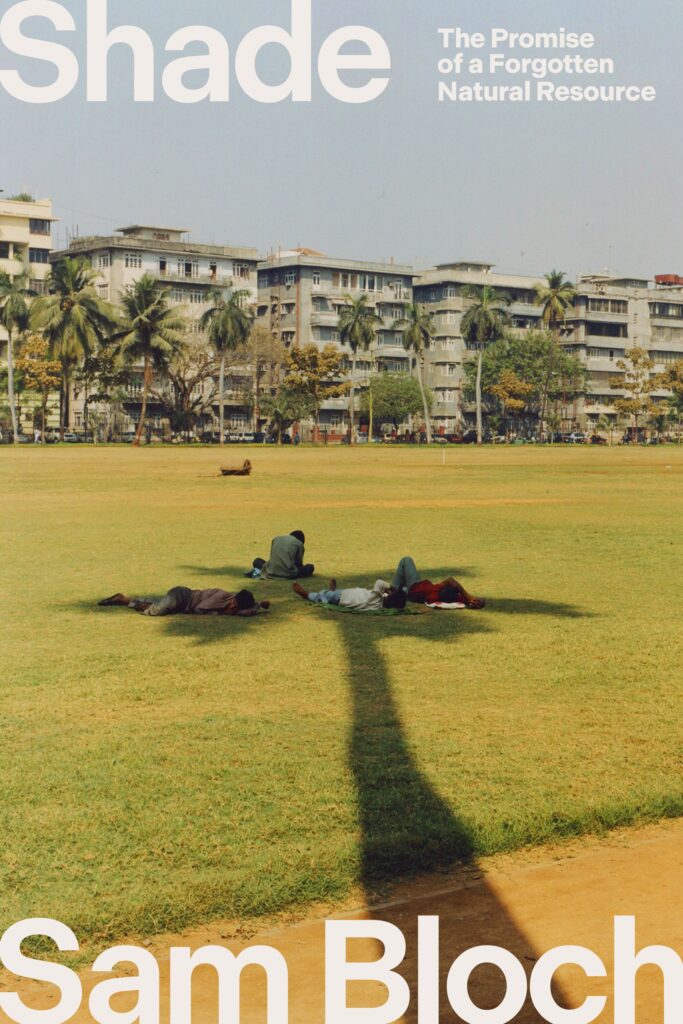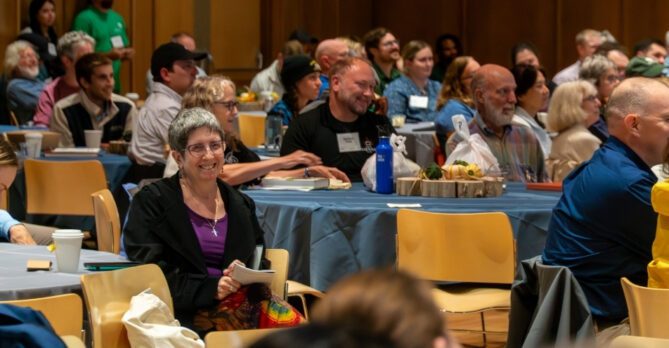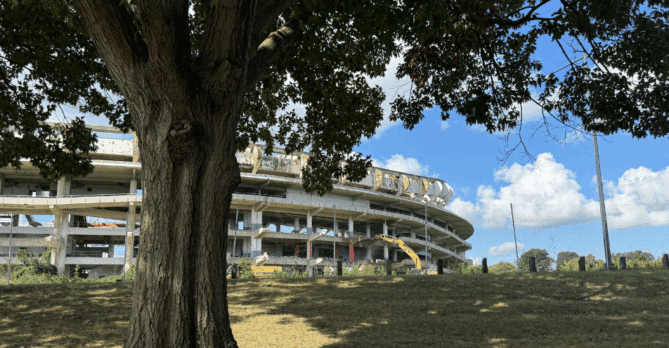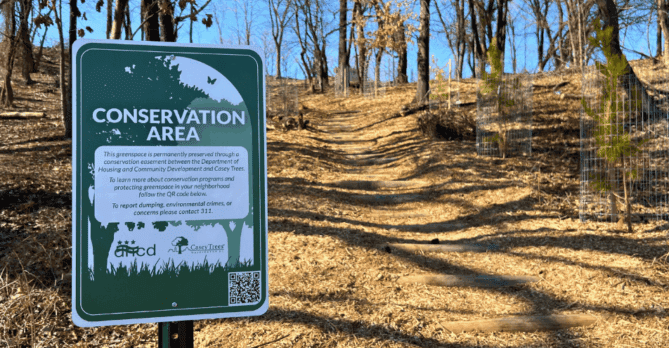
“It didn’t really start with trees; it started with bus stops.” That’s what Sam Bloch says sparked his investigation into one of the most overlooked, underappreciated, and rapidly disappearing resources in American cities: shade. Sam is an environmental journalist and the author of “Shade: The Promise of a Forgotten Natural Resource.” A few years ago, after moving to Los Angeles, Sam noticed something about the bus stops as he traveled around the city.
Up in the leafy hills, his street was cool and calm, even on the hottest days. But just downhill, the cityscape changed — he found bus stops that left passengers exposed to the elements as they waited for their rides, forcing them to seek whatever meager shade they could behind street signs and telephone poles.
As Sam put it, that daily shade inequality gnawed at him. “It can be kind of an undignified experience. It just didn’t seem right or fair, especially in a city like LA that’s getting hotter and drier every year.”
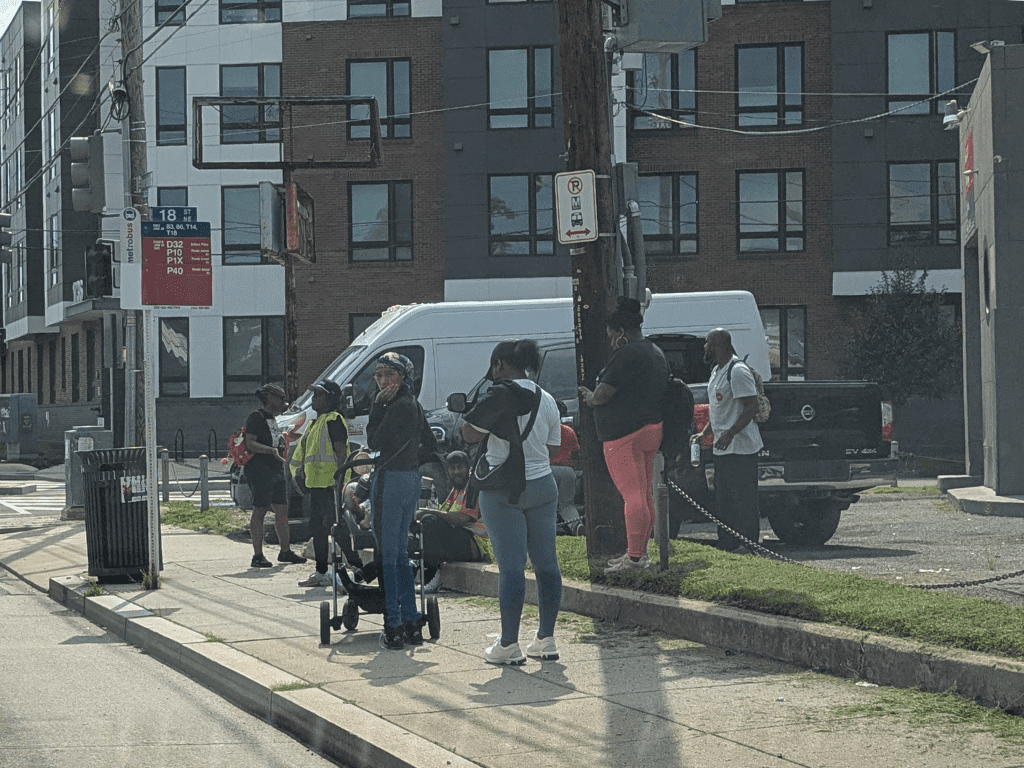
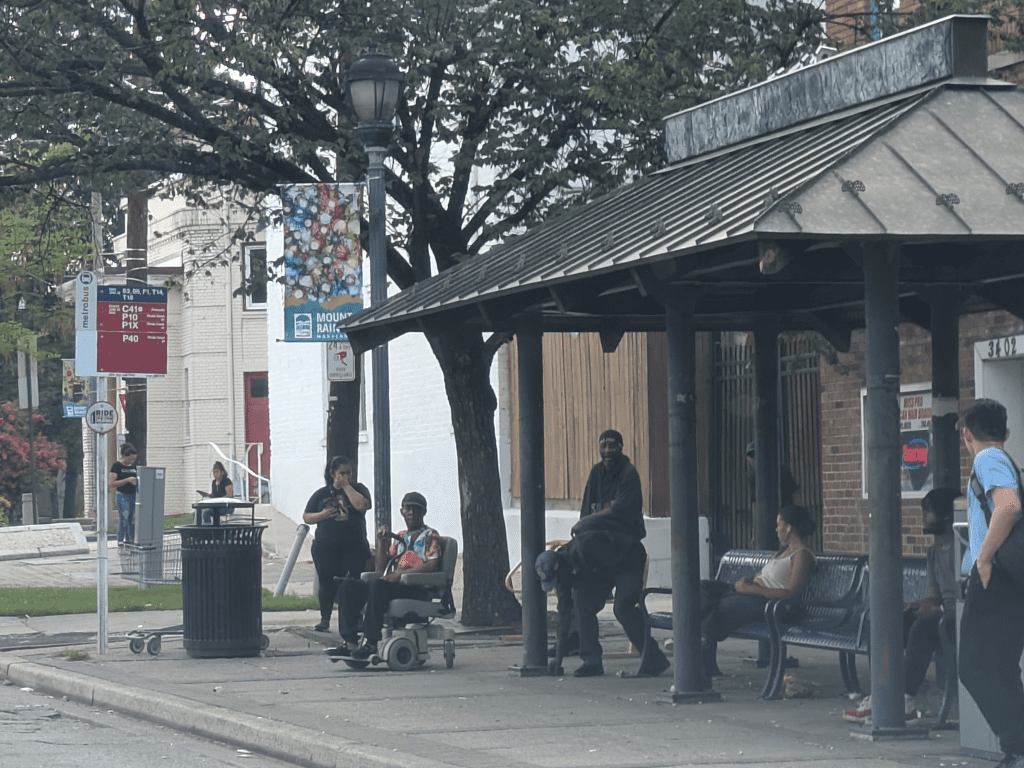
This experience put Sam on the path to investigating how shade is utilized in our urban areas, specifically where it is abundant and where it is scarce. More than a comfort, shade is, in Sam’s telling, a survival tool, an unglamorous but crucial resource for our climate, health, and dignity.
A Brief History of Shade
Turn the clock back a few centuries (or millennia), and humanity knew a few things about beating the heat.
“There’s thousands and thousands of years of history here about shade, at least in human civilization,” said Sam. “I actually begin the book in the animal kingdom, talking about salmon in a stream in Oregon just trying to find a safe place to stay cool and spawn. In the Pacific Northwest, they pretty much have to do that in the shade; otherwise, in the summer, the rivers will be too hot.”
But, of course, it isn’t just salmon. Historically, humans built cities around shade. Sam points to ancient Mesopotamia, explaining that cities flourished in that region partly because they provided reliable shade.
“The city’s urban form, the orientation of the streets, the closeness of the walls… offered people an opportunity to get out of the sun,” he said.
European streets have it down, too.
“Bologna in Italy… has 38 miles of covered sidewalks, which the Italians call porticos,” Sam said. “It creates this incredible, enchanting tunnel of shade, just streets of endless arched columns and roofs that seem to go on forever. A thousand years ago, it was critical… because you needed protection from the elements. And the amazing thing? These public passages are still around today, and property owners are compelled to maintain them for the public.”
Meanwhile, in modern American cities, shade became — well, not a thing.
How Did Shade Become So Rare?
“Shade was once a staple of civilization,” Sam said, but a tangle of 20th-century trends changed all that. Foremost was the arrival of air conditioning. After people could hide from the heat indoors, shade on the street fell off the urban planner’s agenda.
“It can be a strangely problematic technology. Compared to other countries, Americans are overly reliant on it.”
Additionally, over time, American cities have become optimized for cars. Space that was originally designated for storefronts, sidewalks, and trees has been converted to wide roads and large parking lots, leaving sidewalks too narrow to accommodate a large tree or even a bus shelter.
“In the book, I go to Barcelona. And I went to see a project there where they’re basically removing driving lanes and parking lanes from streets around the city and filling them with trees instead. And that’s a really amazing solution,” he said. “By removing cars from the road, and shading the streets with more trees, you’re adapting to climate change and cooling cities.”
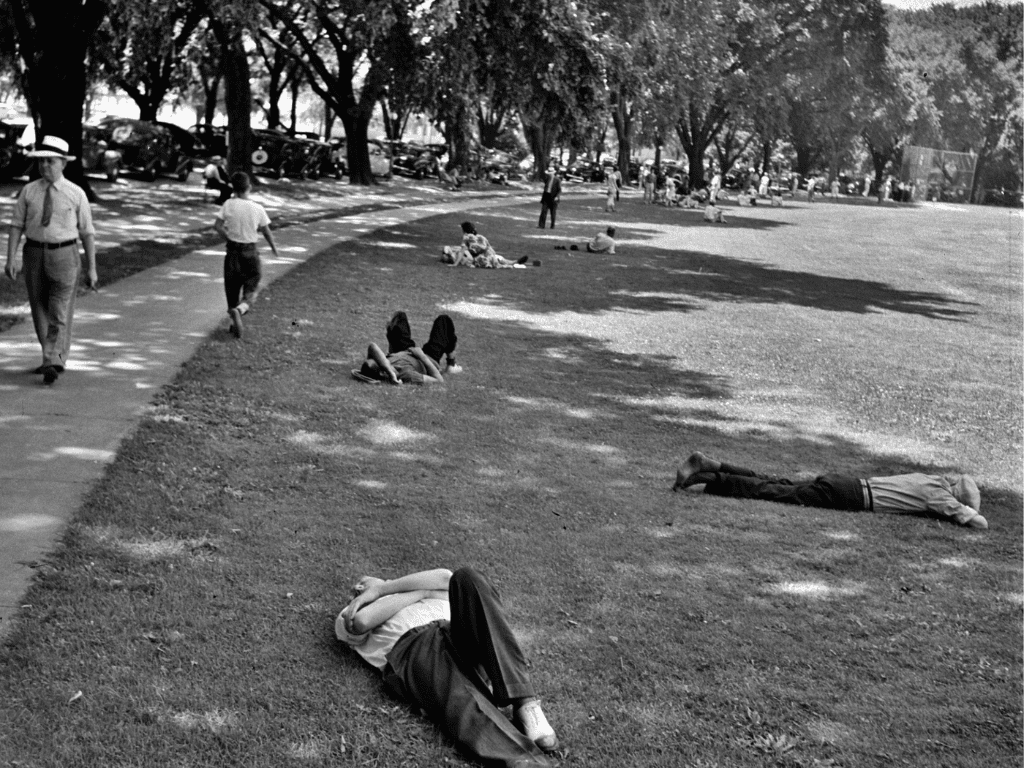
The long-term effects of building codes and legacy city planning are evident all around us, even in Washington, DC, a city originally designed for trees and green space. Sam explained that DC was literally “made for trees” through something called “public parking,” but this didn’t mean cars. In the 1870s, the DC Parking Commission used “parking” to refer to the tree-lined spaces between buildings and streets, essentially small parks reserved for trees, gardens, and sidewalks. Over the past century, cars gradually took over these tree-lined spaces, but the term “parking” stuck — even though it now refers to cars instead of trees.
There’s also the oddball legacy of building codes. “In the 1920s, there was a belief that shadows could actually cause tuberculosis and other urban vices and encourage crime,”
said Sam. So, cities like New York are designed for sun: “You see the way that buildings are designed to eliminate shadow and create more sun. If you look at the Chrysler Building, the upper stories kind of tear back, almost like a wedding cake, and that’s specifically to allow the sun to… hit the streets below.”
But beneath this history lies something else. “We naturally, I think, intuit that richer neighborhoods have more trees than poorer ones, but I try to explain that it’s not an accident,” Sam said.
Decades of redlining and disinvestment made shade a marker of privilege, a “shade gap” where the temperature can swing by 20 degrees between neighborhoods just a few blocks apart. “It’s pretty amazing — not in a good way — how this pattern still endures.”
Shade Isn’t Just Trees—But Trees are Important
When asked what the solutions to shade and extreme heat are — trees, shelters, reflective coatings, shade sails?! — Sam chuckled. “Why not all of it, right? I think all this stuff can work together.”
There are levels to shade quality, and a purpose for each solution. Strictly in terms of relief and shelter from the sun, a shadow from a building, awning, or shade sail is going to be the most effective at high noon, he said. The shade provided is full and dark.
“Trees obviously are not completely opaque, but that’s one of the things we like about them — we like the dappled light,” Sam explained. But, “Trees have this other superpower of evapotranspiration… If you get a lot of trees together in a forest, a park, in a really densely planted neighborhood, you do get that air cooling effect, and scientists have done tons of studies showing that neighborhoods with lots and lots of trees have lower ambient air temperatures.”
We’ve all experienced this one way or another. It is well evidenced when looking at playgrounds throughout our neighborhoods.

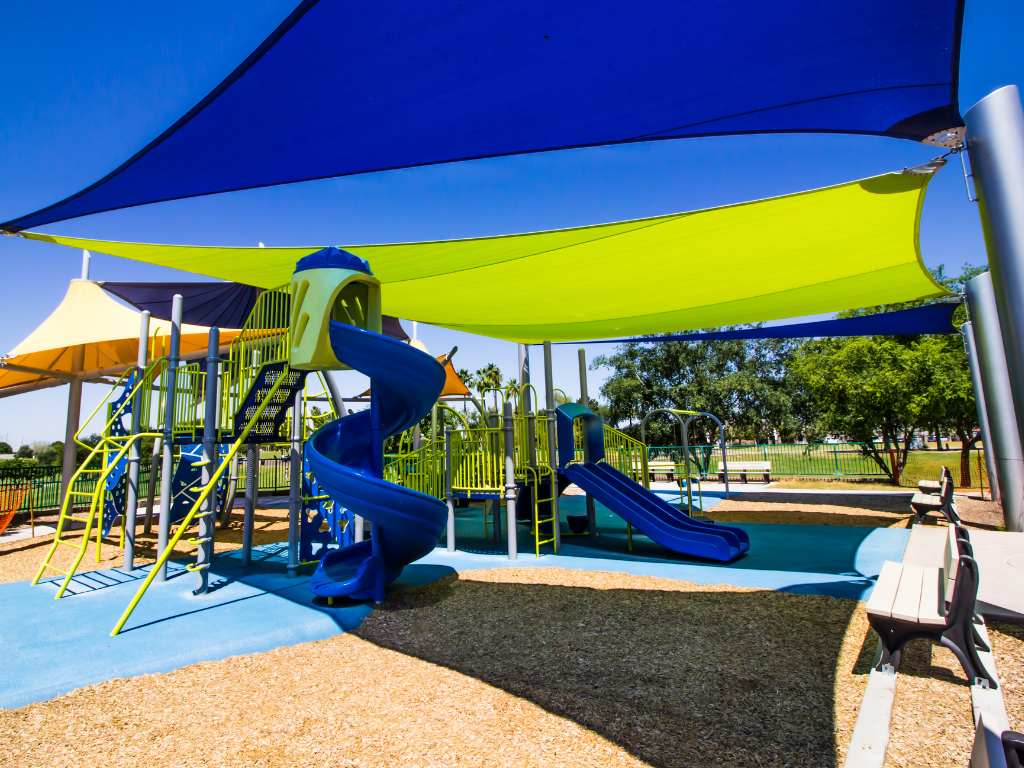
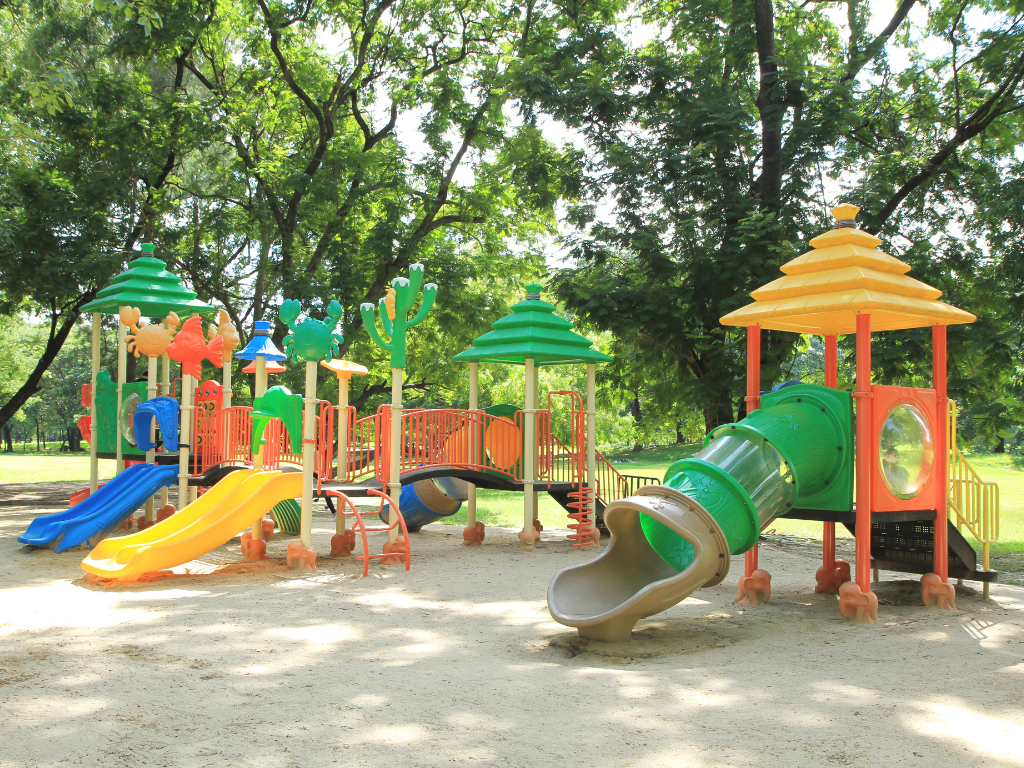
“At the same time, you also can’t have too many of those big buildings because buildings, when they absorb the sun’s heat, hold on to it and then release it slowly during the day and especially overnight,” he said. “That raises average temperatures.” This is referred to as the urban heat island effect.
The lesson? “You need a mix.”
The Real Impediments—and the Path Forward
Why don’t more cities prioritize shade? Sam doesn’t mince words: “Our policymakers and our decision-makers need to start centering shade just in the sort of bigger issues that we’re trying to tackle.”
The barriers are as much about attitude as asphalt. “In Europe, energy has never been as cheap and abundant as it is in the U.S., so it’s more expensive and more difficult to just blast air conditioning all the time,” Sam said. “There’s an understanding… that you need more shade because it passively cools a building.”
Further, policymakers do not prioritize or treat trees as a valuable resource. Sam explained that many cities fail to treat street trees as essential infrastructure equivalent to roads, sewers, or power lines.
And because trees don’t get that same kind of funding or consideration in city planning, they’re sometimes “the last piece of the puzzle to go into the street design.”
“That’s an underrated but hugely influential reason why it’s so much harder for cities to get trees into the ground today. Because they’re an afterthought in so many ways,” he said.
But change is in the air — and Sam is hopeful. Phoenix, beset by lethal heat, now plans to plant tens of thousands of trees and build shade structures. Los Angeles is ramping up shade projects in time for the Olympics.
“I am hopeful that we can change things. But to really galvanize shade at the local level, you need the bigger framework to understand how it fits in,” he said.
Seeing Shade in a New Light
Sam gave some final thoughts on shade, noting that it’s about much more than comfort.
“The other thing I really like about shade is that it’s public, right? Air conditioning, we need to go inside to experience. But we all have a park that we love, a shaded tree that we love, places where we like to meet together outside.” In other words, shade doesn’t just cool us — it brings us together.
So next time you duck under a tree, linger in the shadow of a bus shelter, or find that elusive pocket of cool in the city, know there’s a story woven into every patch of shade you enjoy. Where our shade has been made is no accident. Shade is a precious resource, to be protected and advocated for — much like our trees.
